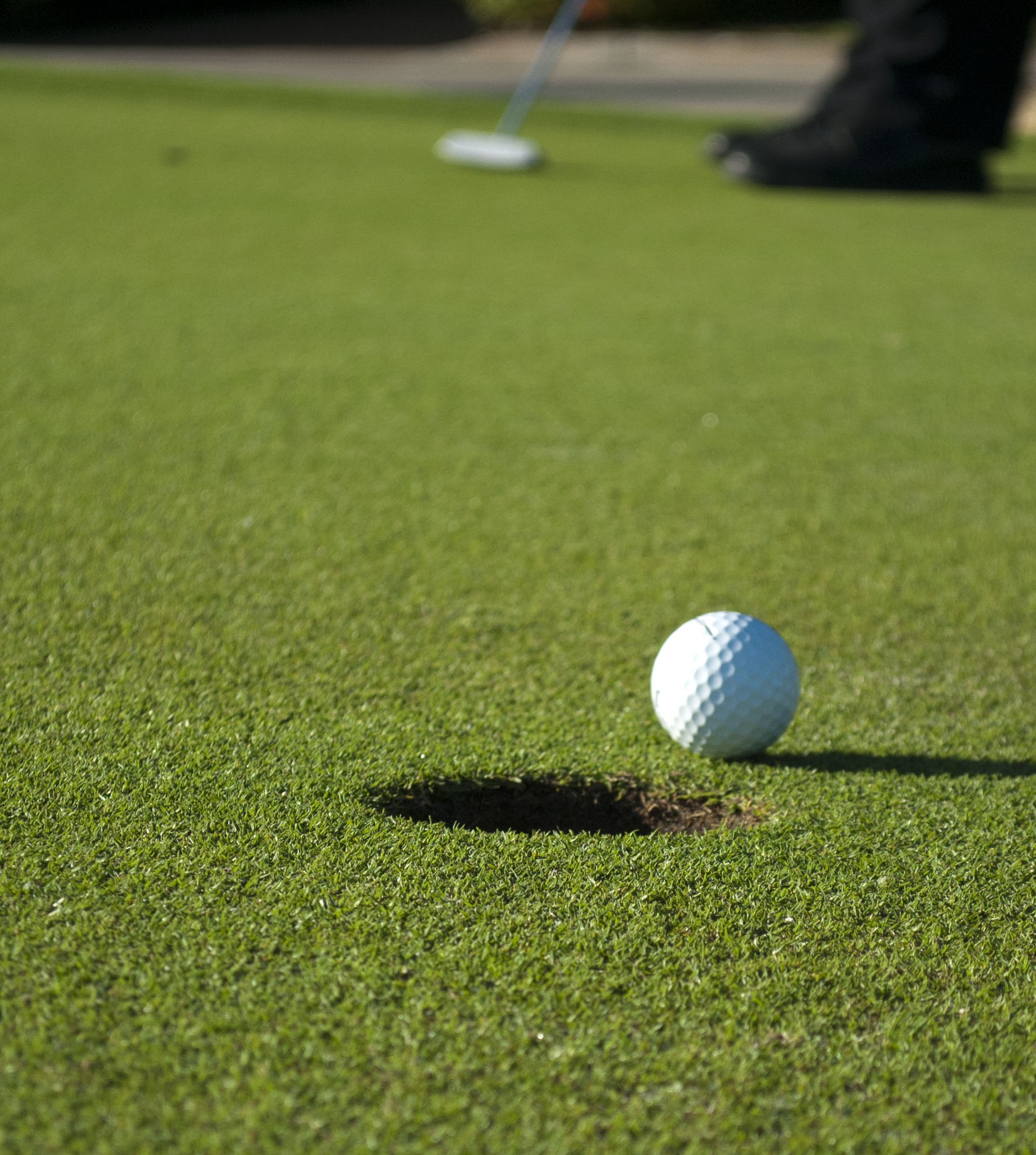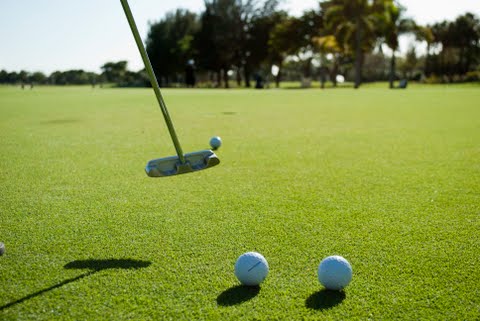Instruction
Why you shouldn’t lag putt

Frank Akey has been a teaching professional specializing in the short game since 1989, having taught students that ranged from raw beginners through mini-tour players, all ages, male and female. He served served as the Short Game Director for a major golf school for a brief time as well. His career prior to golf was in the weapons/tactics field, also as an instructor, so teaching accuracy seems to follow him.
I have some Core Beliefs and Absolutes when it comes to putting and the short game in general. This article is related to putting, so here are my “absolutes:”
- Only two things can happen when you stroke a putt, no matter if it is a 1 footer or a 100 footer … you make it or you miss it, it is that simple.
- Only two things you can have control of when you stroke a putt … you roll it on the line you intended and you roll it the speed you intended, also that simple.
- You can make EVERY putt that you look at, no matter how long or how many breaks in the putt, BUT, not all putts will go in.
- Imagination and feel is more important than having pure mechanics.
- DO NOT LAG PUTT!!
Now, having said that, I can already hear the people yelling, “Blasphemy!” and “This guy is a flake/moron/idiot …” Or whatever description comes to mind, so let me expand a little on each of the above absolutes.
Let’s tackle the lag putt. This subject matter could take pages of discussion, but I will keep it short and sweet for the purpose of this article. My reasoning for teaching my students NOT to lag putt is more by definition of what most, including the majority of TV announcers, define as lag putting. When I hear someone say that the golfer is just trying to get the ball within a 5-foot circle, or that they would be happy if they kept the ball within X amount of feet, it drives me crazy! I am ALWAYS looking to MAKE the putt, no matter how many breaks, how far, degree of difficulty … I want the ball to stop within the magical 4.25” circle…the hole. There will always be a line and speed combination that will allow the ball to go in, and sometimes there is more than one combination that will work. Using the other definition, a lag putt is an intentionally missed putt that hopefully is close enough for an easy next putt. Using that logic, on a tough driving hole, do you lag drive hoping to keep the ball within 40 yards of the fairway? How about from the middle of the fairway 120 yards out, do you lag approach just trying to keep the ball within 40 yards of the green? Putting is all about confidence, and a lag putt is a lack of confidence in either your first putt or the ability to make the second putt from wherever the first putt stops.
That takes us to knowing you can make any putt that you look at, yet, not all putts will go in. That is the confidence that you build by practicing all kinds of putts, long and short, straight and breaking, uphill and downhill. Once you start seeing a lot of putts falling, your confidence starts to increase on those types of putts. Now when you have a 50 foot putt, you aren’t worried if you miss knowing you will make the next one, so you will start trying to make the longer putts. Believe it or not, they will occasionally go in … whodathunkit? It is a simple theory, but once you lose confidence in your putting, your chances of making anything dwindle dramatically. What some do not realize, is that a perfectly struck putt on a perfectly manicured green on a perfectly straight line will go in perfectly dead center … but not 100% of the time. The ball can have very slight imperfections that cause the ball to veer off line. The blades of grass are growing by the millisecond, and a small grain of sand may move ever-so-slightly and knock the ball off line. Something can make the ball take a small hop, which will change the roll and possibly alter the path. On the flip side, those same things can happen to a putt that is slightly OFF line and end up causing the ball to take the CORRECT line and go in … have you ever had that happen to you? It has happened to me.
My absolute that says only two things can happen is pretty much self-explanatory. After you strike a putt, the only results are a missed putt or a made putt. There isn’t really much than can be expanded on, so let’s look at this absolute’s cousin, only two things that you can control … speed and line. If after spending time reading the putt, you determine the line you think the ball must roll on, you can control whether or not you roll it on that intended line. Also, after determining what speed you think is necessary for the putt to go in, you can control the pace of your stroke to produce that speed. At the end of the putt, your ball rolling on your intended line on your intended speed will have done one of two things … you made it or you missed it.
The last of the absolutes is more of an opinion than a scientific fact. I believe that you will be more successful at putting if you have a good imagination in visualizing how the putt will roll, and able to use feel to duplicate that visualization. One cannot be taught either, but both can be developed. One of the methods I use in teaching imagination and visualization is to have you look at the green as if it were a hard, shiny solid sheet of granite. Seeing the undulations in the granite, if you were to roll the ball like a marble, how would the ball react to the various slopes and breaks? To help a student develop better feel, I have them stand on the green facing the hole, hold the golf ball in their dominate hand using only the thumb, index finger, and middle finger, and roll the golf ball to the hole, trying to get it to stop as it falls into the hole. After a few successful rolls, they then will take their putting stance and repeat the procedure. Some students are continually doing these things as drills when their putting goes sour.
Next time we will go into the hot topic of standard vs. belly vs. broom/long putters and how to determine which is best for you … if the USGA will let us. Until then.
Click here for more discussion in the “Instruction & Academy” forum.
- LIKE26
- LEGIT4
- WOW1
- LOL0
- IDHT0
- FLOP4
- OB2
- SHANK9
Instruction
Clement: Laid-off or perfect fade? Across-the-line or perfect draw?

Some call the image on the left laid off, but if you are hitting a fade, this could be a perfect backswing for it! Same for across the line for a draw! Stop racking your brain with perceived mistakes and simply match backswing to shot shape!
- LIKE0
- LEGIT0
- WOW0
- LOL0
- IDHT0
- FLOP0
- OB0
- SHANK0
Instruction
The Wedge Guy: The easiest-to-learn golf basic

My golf learning began with this simple fact – if you don’t have a fundamentally sound hold on the golf club, it is practically impossible for your body to execute a fundamentally sound golf swing. I’m still a big believer that the golf swing is much easier to execute if you begin with the proper hold on the club.
As you might imagine, I come into contact with hundreds of golfers of all skill levels. And it is very rare to see a good player with a bad hold on the golf club. There are some exceptions, for sure, but they are very few and very far between, and they typically have beat so many balls with their poor grip that they’ve found a way to work around it.
The reality of biophysics is that the body moves only in certain ways – and the particulars of the way you hold the golf club can totally prevent a sound swing motion that allows the club to release properly through the impact zone. The wonderful thing is that anyone can learn how to put a fundamentally sound hold on the golf club, and you can practice it anywhere your hands are not otherwise engaged, like watching TV or just sitting and relaxing.
Whether you prefer an overlap, interlock or full-finger (not baseball!) grip on the club, the same fundamentals apply. Here are the major grip faults I see most often, in the order of the frequency:
Mis-aligned hands
By this I mean that the palms of the two hands are not parallel to each other. Too many golfers have a weak left hand and strong right, or vice versa. The easiest way to learn how to hold the club with your palms aligned properly is to grip a plain wooden ruler or yardstick. It forces the hands to align properly and shows you how that feels. If you grip and re-grip a yardstick several times, then grip a club, you’ll see that the learning curve is almost immediate.
The position of the grip in the upper/left hand
I also observe many golfers who have the butt of the grip too far into the heel pad of the upper hand (the left hand for right-handed players). It’s amazing how much easier it is to release the club through the ball if even 1/4-1/2″ of the butt is beyond the left heel pad. Try this yourself to see what I mean. Swing the club freely with just your left hand and notice the difference in its release from when you hold it at the end of the grip, versus gripping down even a half inch.
To help you really understand how this works, go to the range and hit shots with your five-iron gripped down a full inch to make the club the same length as your seven-iron. You will probably see an amazing shot shape difference, and likely not see as much distance loss as you would expect.
Too much lower (right) hand on the club
It seems like almost all golfers of 8-10 handicap or higher have the club too far into the palm of the lower hand, because that feels “good” if you are trying to control the path of the clubhead to the ball. But the golf swing is not an effort to hit at the ball – it is a swing of the club. The proper hold on the club has the grip underneath the pad at the base of the fingers. This will likely feel “weak” to you — like you cannot control the club like that. EXACTLY. You should not be trying to control the club with your lower/master hand.
Gripping too tightly
Nearly all golfers hold the club too tightly, which tenses up the forearms and prevents a proper release of the club through impact. In order for the club to move back and through properly, you must feel that the club is controlled by the last three fingers of the upper hand, and the middle two fingers of the lower hand. If you engage your thumbs and forefingers in “holding” the club, the result will almost always be a grip that is too tight. Try this for yourself. Hold the club in your upper hand only, and squeeze firmly with just the last three fingers, with the forefinger and thumb off the club entirely. You have good control, but your forearms are not tense. Then begin to squeeze down with your thumb and forefinger and observe the tensing of the entire forearm. This is the way we are made, so the key to preventing tenseness in the arms is to hold the club very lightly with the “pinchers” — the thumbs and forefingers.
So, those are what I believe are the four fundamentals of a good grip. Anyone can learn them in their home or office very quickly. There is no easier way to improve your ball striking consistency and add distance than giving more attention to the way you hold the golf club.
More from the Wedge Guy
- The Wedge Guy: Golf mastery begins with your wedge game
- The Wedge Guy: Why golf is 20 times harder than brain surgery
- The Wedge Guy: Musings on the golf ball rollback
- LIKE86
- LEGIT13
- WOW6
- LOL1
- IDHT0
- FLOP4
- OB1
- SHANK8
Instruction
Clement: Stop ripping off your swing with this drill!

Not the dreaded headcover under the armpit drill! As if your body is defective and can’t function by itself! Have you seen how incredible the human machine is with all the incredible feats of agility all kinds of athletes are accomplishing? You think your body is so defective (the good Lord is laughing his head off at you) that it needs a headcover tucked under the armpit so you can swing like T-Rex?
- LIKE0
- LEGIT2
- WOW2
- LOL0
- IDHT0
- FLOP0
- OB0
- SHANK2
-

 19th Hole2 weeks ago
19th Hole2 weeks agoDave Portnoy places monstrous outright bet for the 2024 Masters
-

 19th Hole3 days ago
19th Hole3 days agoJustin Thomas on the equipment choice of Scottie Scheffler that he thinks is ‘weird’
-

 19th Hole2 weeks ago
19th Hole2 weeks agoTiger Woods arrives at 2024 Masters equipped with a putter that may surprise you
-

 19th Hole3 days ago
19th Hole3 days ago‘Absolutely crazy’ – Major champ lays into Patrick Cantlay over his decision on final hole of RBC Heritage
-

 19th Hole3 weeks ago
19th Hole3 weeks agoReport: Tiger Woods has ‘eliminated sex’ in preparation for the 2024 Masters
-

 19th Hole2 weeks ago
19th Hole2 weeks agoTwo star names reportedly blanked Jon Rahm all week at the Masters
-

 19th Hole1 week ago
19th Hole1 week agoReport: LIV Golf identifies latest star name they hope to sign to breakaway tour
-

 19th Hole1 week ago
19th Hole1 week agoNeal Shipley presser ends in awkward fashion after reporter claims Tiger handed him note on 8th fairway

























md
Jul 4, 2012 at 9:17 pm
I think he’s just refering to putting here not your entire course management. And all he’s really saying is if you believe you can make every putt you will try to make every one. If you do that, the result will be that you will generally be within that 3 foot circle alot more often. Its just the principal of setting specific goals not general ones.
Leroy Potgieter
Dec 15, 2017 at 12:17 pm
The point of lag putting for me is more about speed control. One should always go for the hole, but with precise power management so that misses become tap ins
nwri
Jun 20, 2012 at 6:05 pm
Lag Putting = Hitting Irons to the middle of the green imo. Some pins you just do not go for. Just like some putts you have to respect.
cwang
Mar 10, 2012 at 6:16 am
But isn’t there a big difference between leaving yourself 3 feet uphiller breaking toward you and a 3 foot downhiller breaking away from you? There’s a reason pros like to leave it below the hole on long putts…
Techvan4Life
Mar 9, 2012 at 12:51 am
I don’t know if I would agree with much of this article. The author asks if you would “lag” on a tough driving hole or “lag” from 120 yards out. Yes I do both, I’m not afraid to grab a 3 wood on a tough driving hole, or aiming away from a sucker pin to the center of the green. Shot placement from anywhere on the golf course is the equivalent to lag putting, I am intentionally not hitting the ball directly at the pin. Lag putting is an important part of the game that every player should know how to do successfully. It doesn’t have to be a complete putting philosophy but if you remove it from your game you better be ready for some three putts, and the skill has saved my ass in a couple pressure situations. Since the author hates lag putting and calls the shot an intentional miss I can only assume he never plays a shot that could be considered an intentional miss. He goes for it in two on every par 5, never pitches out of trouble, hits low percentage shots all day long, and never lays up to a position, angle, or yardage that he might like. He aims directly at the pin, hits it and hopes that it goes in, like he said he is hoping the ball lands in the magical 4.25″ circle.
Leroy Potgieter
Dec 15, 2017 at 12:21 pm
Solid response, I agree
teddyt
Mar 7, 2012 at 1:10 pm
I think you may have a career in sports psychology … in teaching putting, the jury is still out.
David Fayard
Mar 6, 2012 at 1:09 pm
LOVE the article… I hope people keep believing to “get it close/LAG it” so I can keep beating them….